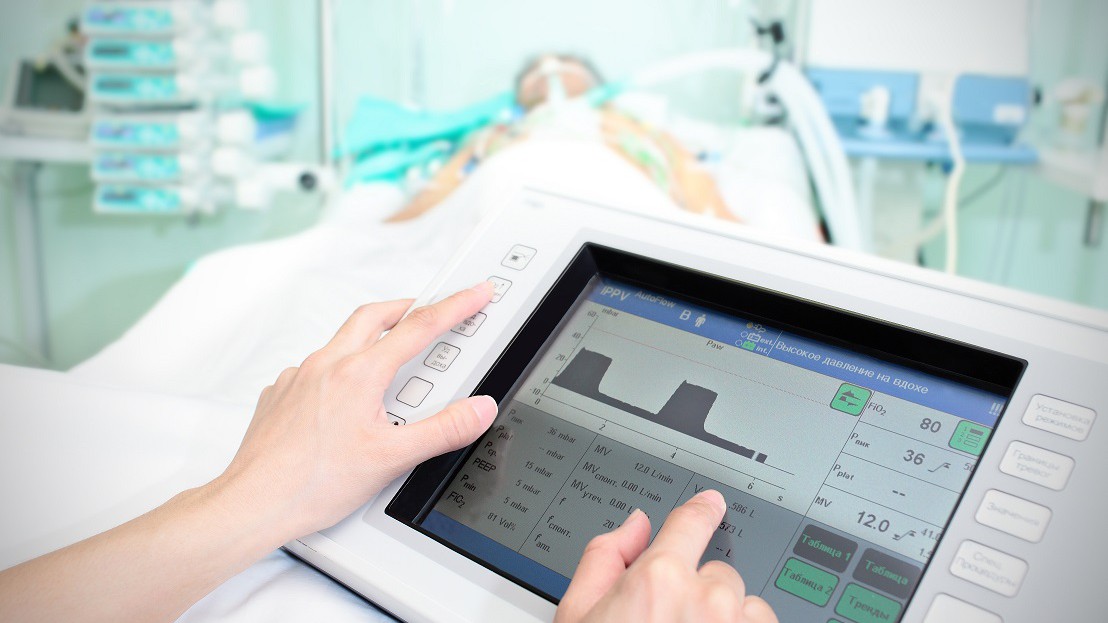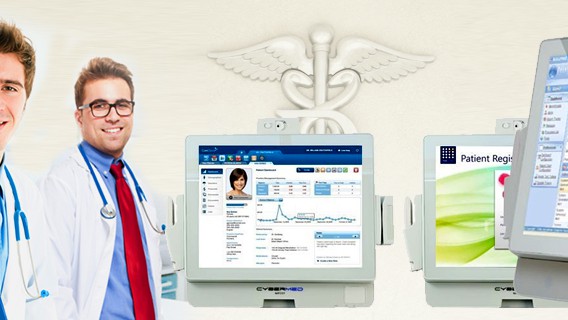Is your hospital planning a major deployment of cutting-edge medical computers? At the forefront of your specifications is the requirement that they must be “medical grade.”
But what exactly does “medical grade” mean? Surprisingly, you won’t stumble upon this term at your local computer stores or on their websites. And you might come across the term “hospital-grade computers.” But are they interchangeable with medical grade?
We answer both questions and more.
Medical Grade Explained
Article Guide
Simply, medical grade means a device or equipment has been built, tested, and, most importantly, certified to operate safely near patients (“near patient use”). Certification is done by an approved testing lab or facility.
This is vital in healthcare, especially in a hospital setting. Patients are there because they’re ill or injured. Reasons can range from a simple cut to recovering from major surgery. Whatever the reason, it’s important to keep them safe long enough to heal and recover.
Part of that safety is making sure equipment like computers do not interfere with the numerous medical devices. Ranging from automated blood pressure monitors to heartbeat sensors, they keep medical staff informed of patients’ current health. They may even support various systems like breathing and kidney function until strong enough to work unaided.
Medical grade ensures electronics like computers will not pose a threat to patients either directly or through interference of their medical devices.
6061-1 Standard
In the healthcare industry, there’s a widely accepted standard for classifying equipment or devices as “medical grade,” known as the 60601-1 certification.
This certification, established by the International Electrotechnical Commission (IEC), comprises a set of technical standards designed to ensure that a product does not inadvertently transmit AC power from the hospital’s electrical supply to the patient. This precaution is crucial to prevent potentially dangerous situations, such as electrical sparks passing from the equipment to the metal rails of a hospital bed and potentially affecting the patient’s heart.
Additionally, the certification helps avoid situations where sparks could ignite flammable anesthesia gases in the operating theater. In essence, IEC 60601-1, often referred to as the “means of protection from AC mains,” acts as a safeguard to prevent both of these hazardous scenarios from occurring in healthcare settings
While IEC 60601-1 is the global standard followed by most countries, some have created their own standard based on their unique policies. Common ones include:
- UL 60601-1 (USA)
- EN 60601-1 (European Union)
- cUL 60601-1 (Canada and US)
IEC 60601-1-2
Put in effect in 2020, the EMC (electromagnetic compatibility) standard, IEC 60601-1-2, is another standard manufacturers follow to make their products medical grade. It guarantees that the device is in sync with the electromagnetic radiation put out by other nearby devices.
Each device manufactured by this standard is rigorously tested to prevent any undesirable disruptions, such as the shutdown of critical systems like anesthesia machines or patient monitoring systems during surgery.
Other Standards of Medical-Grade Devices
Being medical grade is so important to healthcare that its use has unofficially expanded to include
- Fanless Design and Ingress Protection IP65: This international standard, commonly found in healthcare computers, defines the level of protection an electrical enclosure provides against the intrusion of solid particles (like dust) and liquid (such as water).
- ISO 10993: Usually applied to medical materials like hospital tape and stick-to-skin adhesives, this standard ensures the safety and biocompatibility of medical materials and devices when they come into contact with the human body.
- ISO 13485: This standard outlines the requirements for a quality management system that focuses on the unique needs of the medical device industry, particularly those involved in the design, development, production, installation, and servicing of medical devices.
Since none directly involve IEC 60601-1, they are not considered medical grade by the healthcare sector and medical device manufacturers.
Which Devices Need to Be Medical Grade
Due to the near-patient safety concern, medical grade standards are applied to a wide range of devices and equipment used in the healthcare industry to ensure their safety, reliability, and effectiveness. Here’s a closer look at what devices need to be medical grade and where these standards are enforced:
- Medical Imaging Equipment: This category includes devices like MRI machines, CT scanners, ultrasound machines, and X-ray machines.
- Diagnostic Equipment: Instruments such as blood analyzers, ECG machines, and vital sign monitors fall under this category.
- Surgical Instruments and Equipment: Surgical tools, robotic-assisted surgery systems, and anesthesia machines.
- Telemedicine and Remote Monitoring Devices: Telemedicine carts, wearable health trackers, and remote monitoring systems.
With this in mind, all medical computers should typically be designed and manufactured to meet medical-grade standards. They play a critical role in healthcare settings, where they are used for various tasks, including patient monitoring, medical imaging, electronic health record (EHR) management, and diagnostic purposes.
Common places where you’ll find medical-grade equipment and devices:
- Medical device attachments
- Operating rooms — all non-medical grade PCs must stay outside the OR
- Intensive care units
- Radiology departments
- Medical research facilities
Medical Grade vs. Hospital Grade
It is important to understand the difference between medical grade and hospital grade.
Vendors, when potential clients ask for medical-grade equipment and devices, will sometimes tout their offerings as hospital-grade. Similar terms you’ll hear are medical grade-compliant and healthcare-grade.
However, all those terms are pure marketing; they have no official use or meaning in healthcare and related industries. They’re usually touted for computers:
- With features like fanless design and IP65, which are found on most medical-grade computers.
- Have one part that in and of itself may be IEC 60601-1 certified. This is usually the power brick. That does not make the rest of the computer certified, though.
None of these cases are medical grade, i.e. IEC 60601-1 certified. To get proof, you simply need to ask for the certification.
Certified Medical-Grade Computers
In essence, medical-grade is a computer or device that has met certain standards set by the medical equipment industry. These standards, like IEC 60601-1, ensure safe near-patient use.
Are you interested in knowing more about medical grade? Contact an expert here at Cybernet for more info. We’ll be happy to go over our medical-grade computers and how they keep your patients safe, as well as your facility efficient.
Join the conversation and connect with us on this and other relevant topics. Follow us Facebook, Twitter, and Linkedin.
Extending the Life of Medical Equipment with Medical Grade PCs
November 13, 2017
The IT challenges and needs for a healthcare facility are far different than those of a traditional enterprise. Mobility, EMR compatibility, as well as 24/7 operability must all be factored in. But even within the…
0 Comments6 Minutes
How Medical Grade Computers Improve the Standard of Care in the Medical Profession
August 3, 2015
The face of the healthcare industry has changed drastically in the past decade. Now, the use of devices like medical grade computers in patient rooms, emergency rooms, and operating rooms have allowed healthcare service…
0 Comments6 Minutes
How Medical Grade Computers Are Benefitting Chiropractic Clinics
November 13, 2015
Man and machine are made to complement each other, especially when it comes to medicine. They go hand by hand, which is why professionals work with high-end equipment to produce fast, accurate data. This, in return,…
0 Comments4 Minutes
You Can't
Learn from a Pop-up
But we can deliver knowledge to your inbox!
We dive deep in the industry looking for new trends, technology, news, and updates. We're happy to share them with you.
Knowledge, News, and Industry Updates Right in Your Inbox





